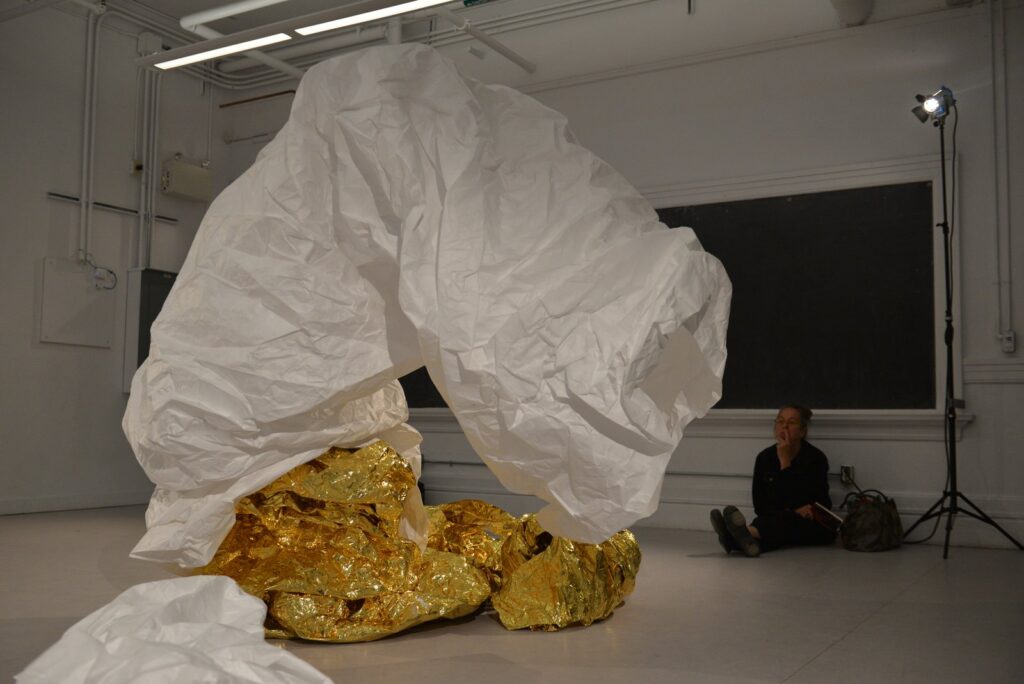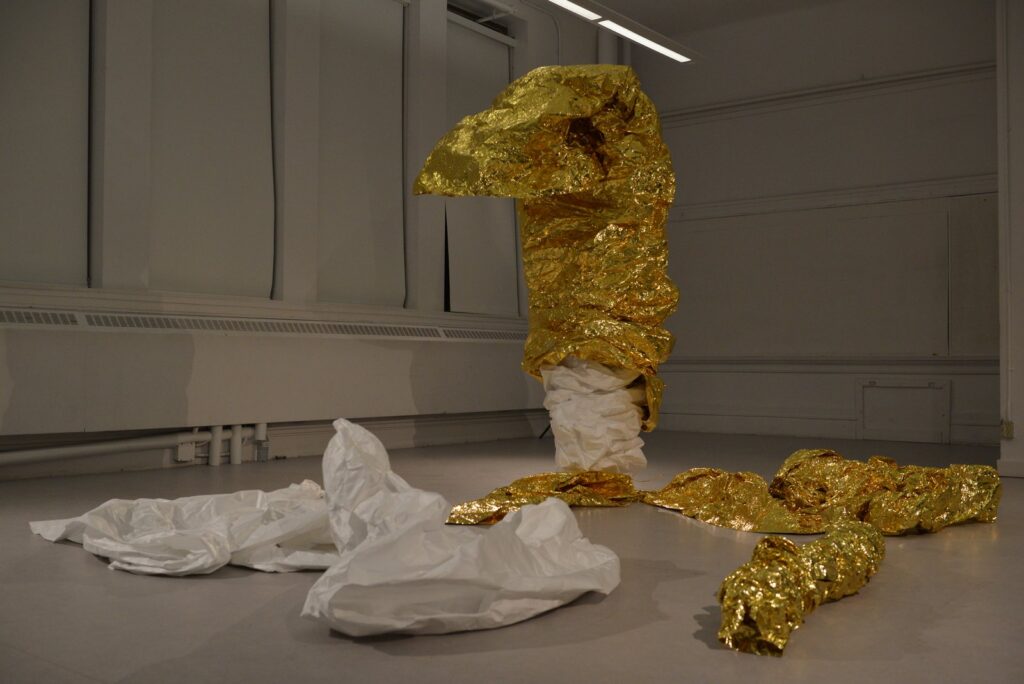By Jenn Snider
It’s day one, late afternoon at Artscape Youngplace. Gary Varro, we understand, is inside one of the festival performance spaces, and for a little while we linger. We’re waiting for the doors to open. When they do, still we wait. There’s no reason, it’s just that there is no gesture of invitation. There’s no sense of urgency to enter.

Once inside, there is a feeling of calm, and it’s a pleasant scene. Large crumpled paper forms in white and metallic gold are strewn about the floor, reminiscent of familiar shapes (dry leaves, a frustrated writer’s floor, dirty laundry, deflated aluminum balloons). The space is waiting, or resting, or simply speaking in tones we have yet to hear. There is no movement, no sound. But this is only for a moment, and only at first.
The large paper mass at the back begins to crinkle and shift
[crackle] [scratch] [crumple] [crunch]
Inching forward, it rolls and reveals that it is more than it seems.
The room shivers, and the scene comes alive.

Soft Peak is the title of Varro’s performance, and it is four hours in length. Varro is, of course, the paper form, or maybe it’s vice versa. Hidden inside layers that fluctuate, undulate, furl and reach, the artist as armature is obscured. For all intents and purposes, he’s not really here. Instead, and perhaps because of this, the large paper form suggests both distance and closeness. Giving us an endurance enactment of an entanglement—or an ontological inseparability—the form and its relationship to space recall, at times, humour, and in others, vulnerability. Sometimes both border on menace. Often, it’s a dance between private moments of recognition, and a public spectacle of confrontation. Observing Varro as agential form is disorienting.
With movements that sometimes suggest one of those wacky inflatable dancing characters on the used car lot, or kids crawling inside a blanket fort, such silliness slides to sadness with only a change of speed. Always accompanied by a sweet din of material scratching as soundscape, the paper pulls, reaches, lifts, and sweetly invites an awkward grace. Sometimes the paper consumes other forms as a snake would eat its prey.

Seamlessly slipping from the natural to the uncanny, the form’s inherent indistinction is neither a complete subject nor a whole object. Resonant with what theoretical physicist/feminist theorist Karen Barad calls intra-acting agencies, or the processes of becoming and differentiating in relation, the forms flow and intermingle unendingly; responding to being made and remade in an interdependent series of intuitive insights.
Like the occasional moments when we connect to the world outside ourselves, every so often the layers of Varro’s form give way and deep inside we see a hand, a wrist, or part of an arm. Contrasting that, there are moments of stillness in form that nevertheless reverberate with the crunching sounds invisible to our eyes, but coming from deep within.
This materializing inside is the person, a body, but as quickly as it is there, it is gone, and even our most spectacular efforts to will the next inch of flesh to be revealed or conveyed just can’t break it free. Instead, we accept that waiting just below the surface of this form (and any form) is a vast potential that we simply can’t directly access. As observers on the periphery we can’t reach from the outside in, and this is okay. Using our senses we can feel the entanglements and tensions within. We can intra-act, materialize our touchstones and still get lost in the social spaces we create. We can recognize ourselves in the mysterious, and like Varro’s Soft Peak, disintegrate nearly but not fully, and with each new shape, try again.
